I’m back with our travel story for the third day of this trip. This time, I want to share with you my amazing experience of visiting Yumthang and Zero Point in Sikkim. These are two of the most beautiful places in the Himalayas, and I was lucky enough to see them in full bloom.
Last evening, we arrived at our hotel in Lachung after a day-long trip. Lachung – “small pass” – is a remote picturesque town and a perfect serene for every nature lover. It’s a bigger village, perhaps a town, as compared to Lachen. This place has a large number of hotels and resorts. When we arrived here, it was dark and so we couldn’t get a chance to explore the town. The sun sets early on mountains! We preferred to stay back at the hotel, relaxed and had dinner and went for sleep.
We were scheduled to leave for Zero Point and Yumthang valley at 7.00 a.m. The morning was very different from that of the urban city’s morning. I opened the window of our hotel room and wow, what a scene in front of me! When we arrived at the hotel, it was dark already and I couldn’t imagine that we had such a wonderful sight in our front.
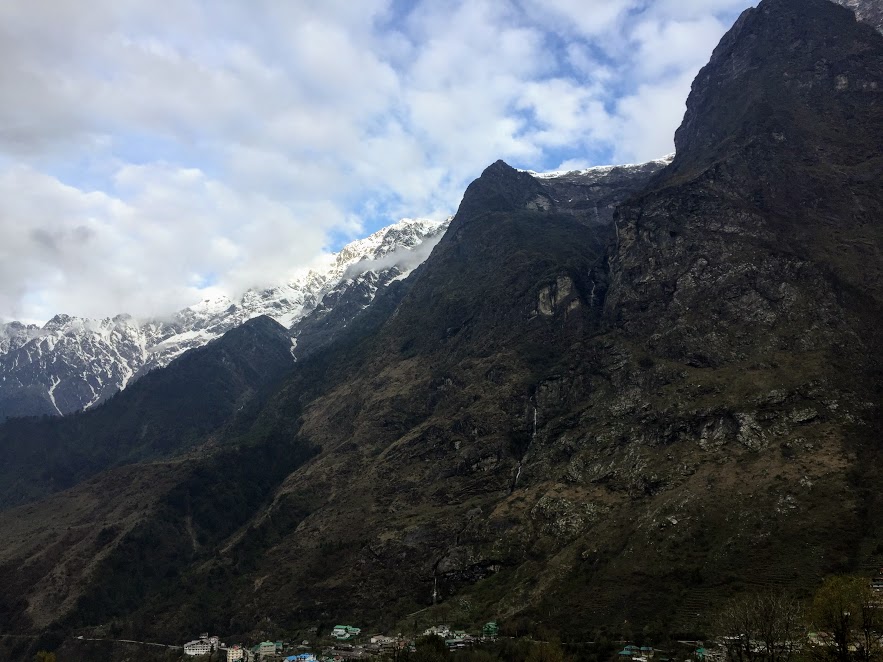
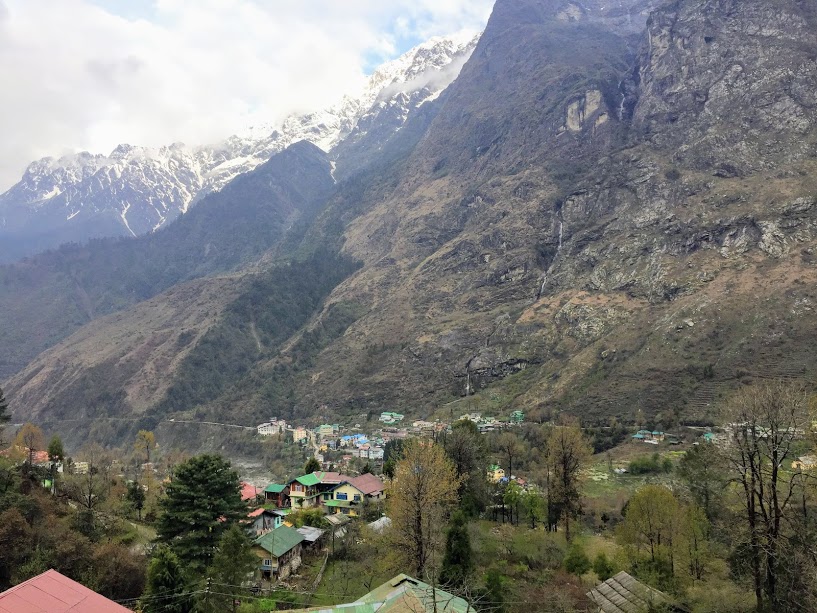
We had our breakfast and left the hotel at around 7.00 a.m. We were keen to explore Zero Point as we were fascinated by the fact that it is the last outpost of civilisation. The road was, initially, much better than the road that we travelled a day before to reach Gurudongmar Lake. However, it became very bad. There had been a massive landslide (rock avalanche) a couple of years ago. The rocks and stones completely filled across the valley. The journey over this patch was quite rough and bumpy as the vehicle had to move over the stone-filled path.

Zero Point a.k.a. Yumesamdong
Zero Point is the last motorable point on the road to China. It is located at an altitude of 15,300 feet above sea level, and it is often covered with snow throughout the year. The place is very cold and windy, but also very exhilarating. You can see the majestic peaks of the Himalayas and feel the thrill of being at the border.
Through this rugged journey, we passed by the Yumthang valley. We didn’t stop at the valley and continued to drive ahead towards the Zero Point. It took us another 1.5 hours from Yumthang by car on the curving mountainous, rugged road. The road ends here!

This is where the civilian road ends and you can’t drive any further and hence the name Zero Point. A short distance away from here is the border with China and tourists are not allowed to go any further beyond the Zero Point. Although the road is quite treacherous, the rewards are awesome.

There is hardly any vegetation in Zero point, it being above the timberline and it’s the place that remains snow-covered for the most part of the year.

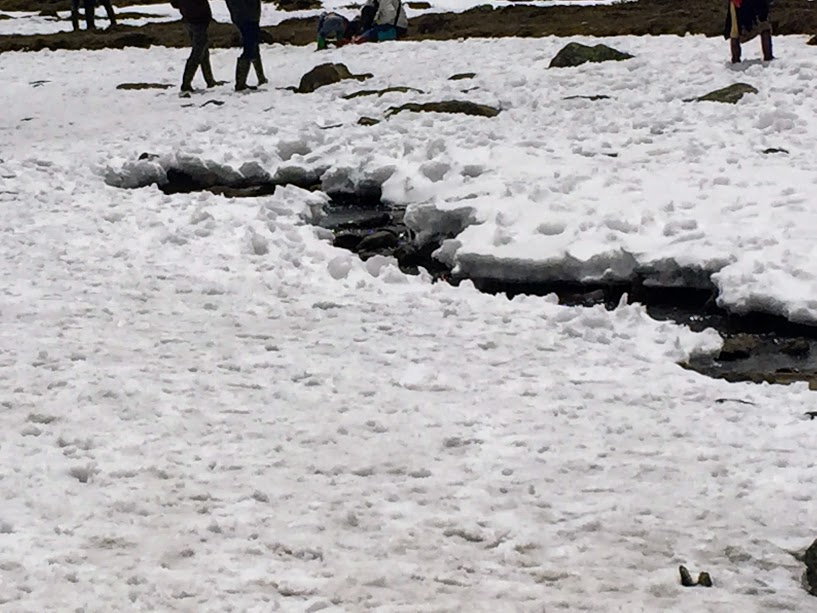

As we climbed up, the air became thinner and so did the vegetation — from pine forest, the scenery changed to light shrubs and after sometimes it completely disappeared.

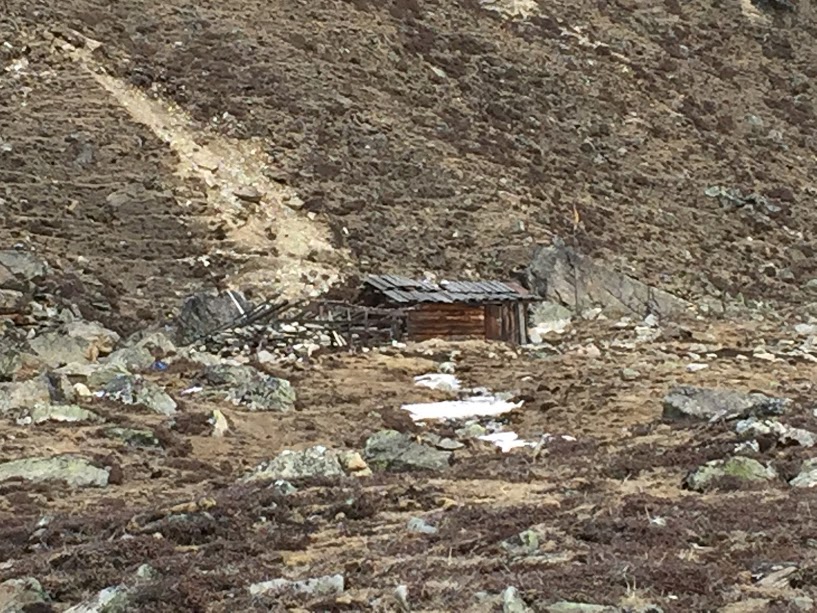
Donkia-La pass is also located here at an altitude of 18,400 ft which connects Lachung Valley with Lachen Valley. However, civilians cannot access the pass due to its proximity with the India-China border.
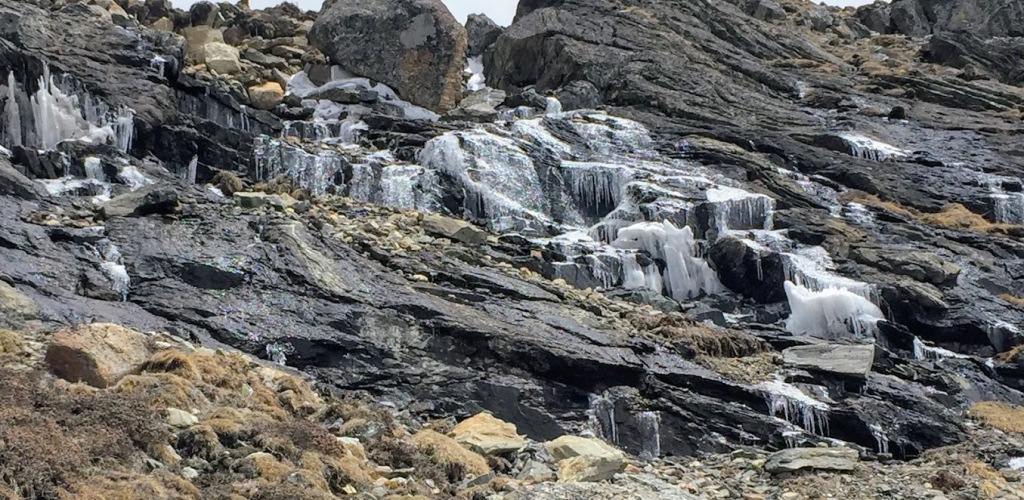
Yumthang Valley
Yumthang is a valley of flowers, where you can see hundreds of different varieties of rhododendrons, primulas, orchids and other alpine flowers. The best time to visit is from March to May, when the flowers are in full glory. The valley is also surrounded by snow-capped mountains and a river that adds to the scenic beauty.
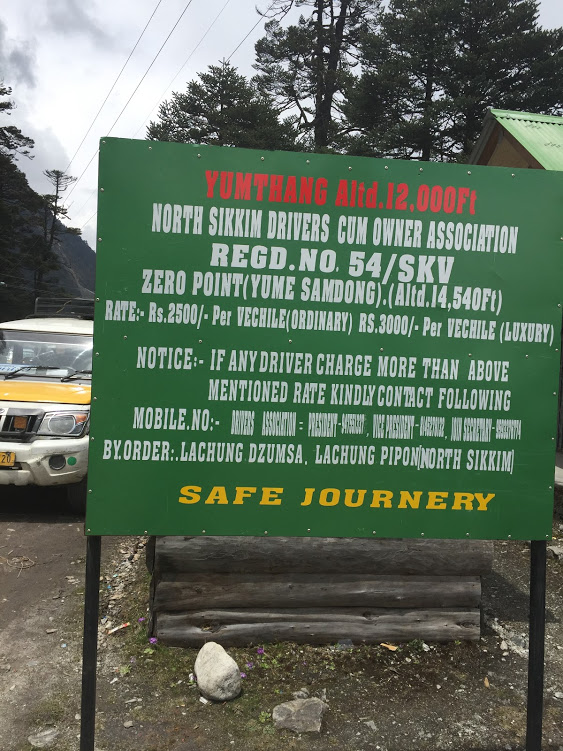
After spending around forty-five minutes, we started our journey back towards Yumthang. It is about 25 km from Lachung, located at an altitude of 12,000 ft. Yumthang Valley aka “Valley of Flowers”, is a paradise for nature lovers with a breathtaking scenic grandeur. The astounding beauty of nature, an awe-inspiring spectacles of alpine pastures, different colours of rhododendrons forests, snow-clad-peaks of the Himalayas make this place — a heaven on earth.

The valley is extremely picturesque with green slopes on either side where yaks graze amidst the green meadow. Some local villagers share their yaks for a ride by tourists for some quick bucks.
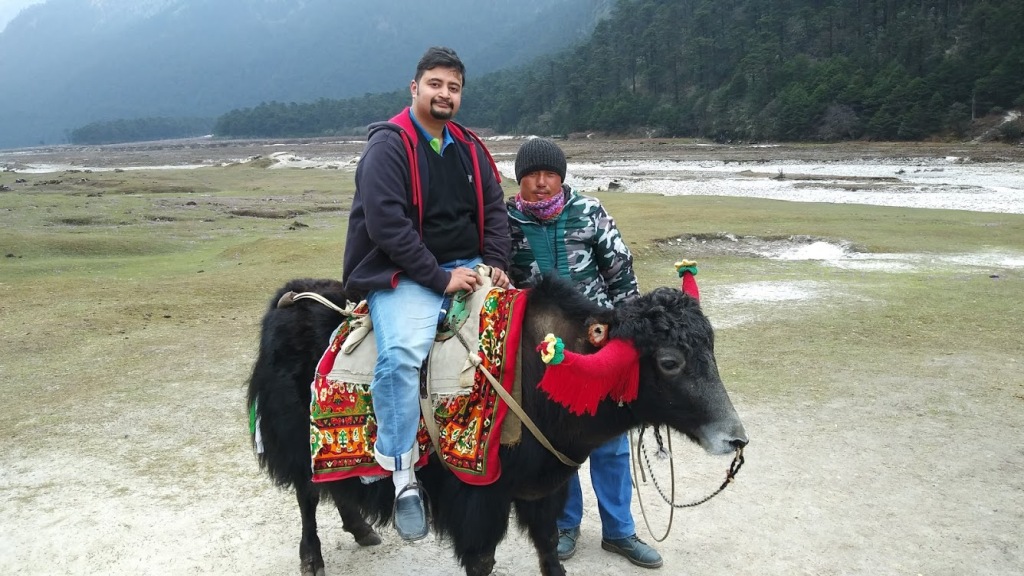
A tributary of river Teesta (Lachung Chu) flows through the valley to make it more mesmerizing beauty. Apart from its own astonishing beauty Yumthang also offers an eye-catching vista of Himalayan peaks along with Pauhunri and Shundu Tsenpa.
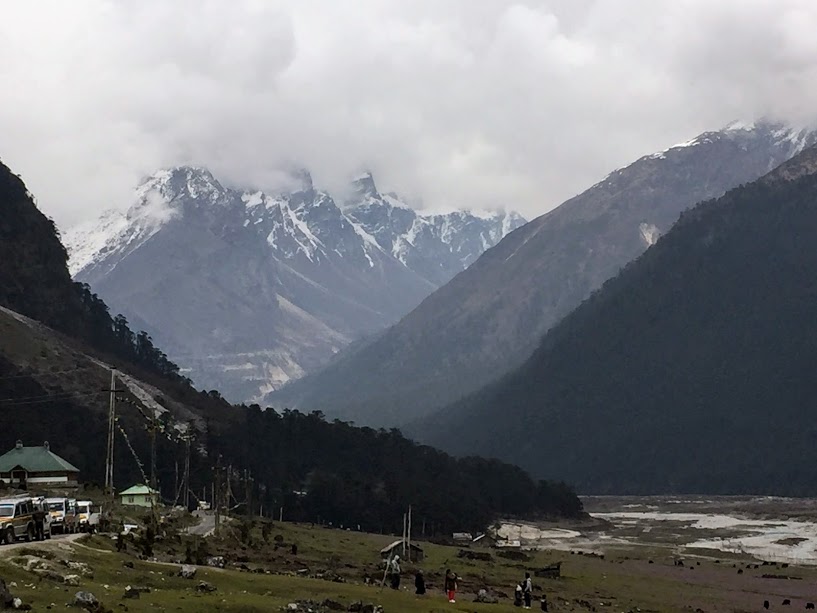
Pauhunri has an elevation of 7,128 metres (23,386 ft) and was first climbed in 1911 by Scottish mountaineer, Alexander Mitchell Kellas, along with two Sherpas known only as “Sony” and “Tuny’s brother”. Unknown at the time, it was revealed 80 years later that this climb made Pauhunri the highest climbed summit on Earth from 1911 to 1930.
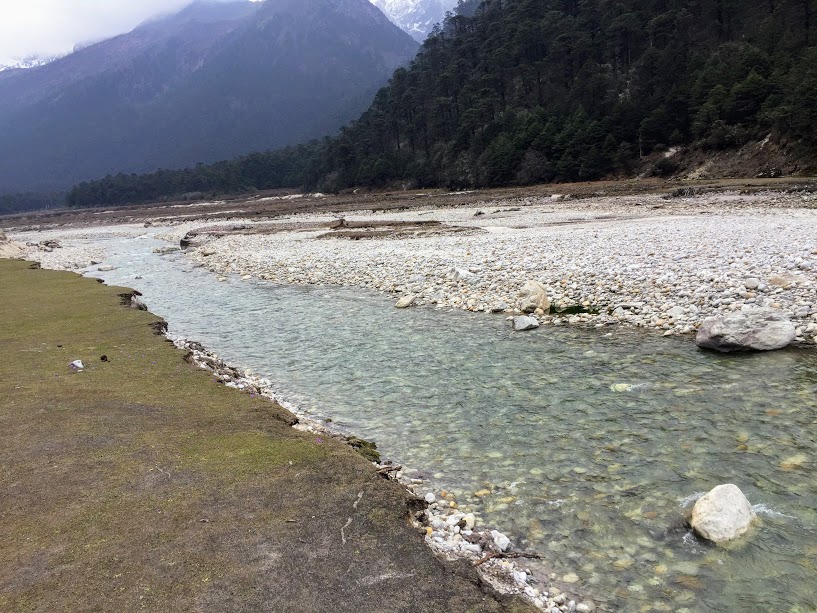
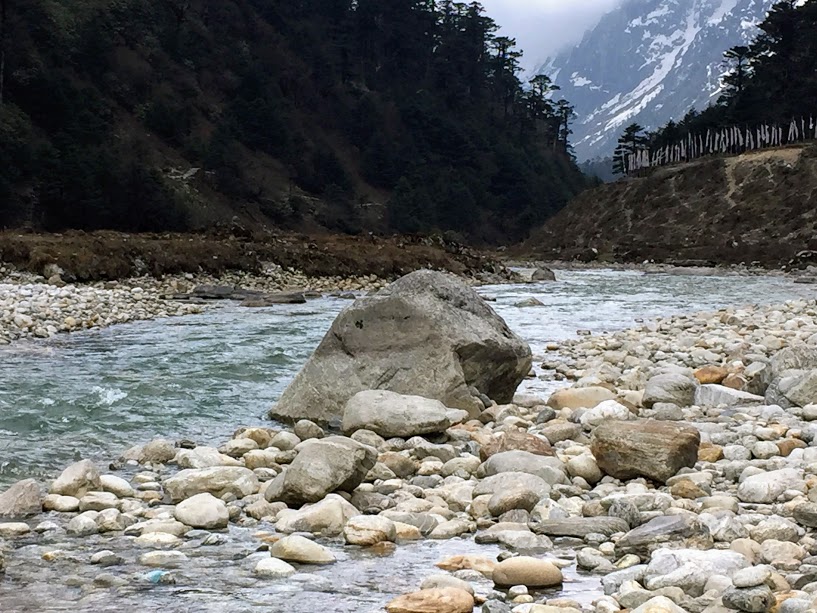
Sir Joseph Dalton Hooker in his “Himalayan Journal” of 1855 mentioned that Lachung and Yumthang are the two most picturesque places in the whole of Sikkim and had even compared them to the valleys of Switzerland.
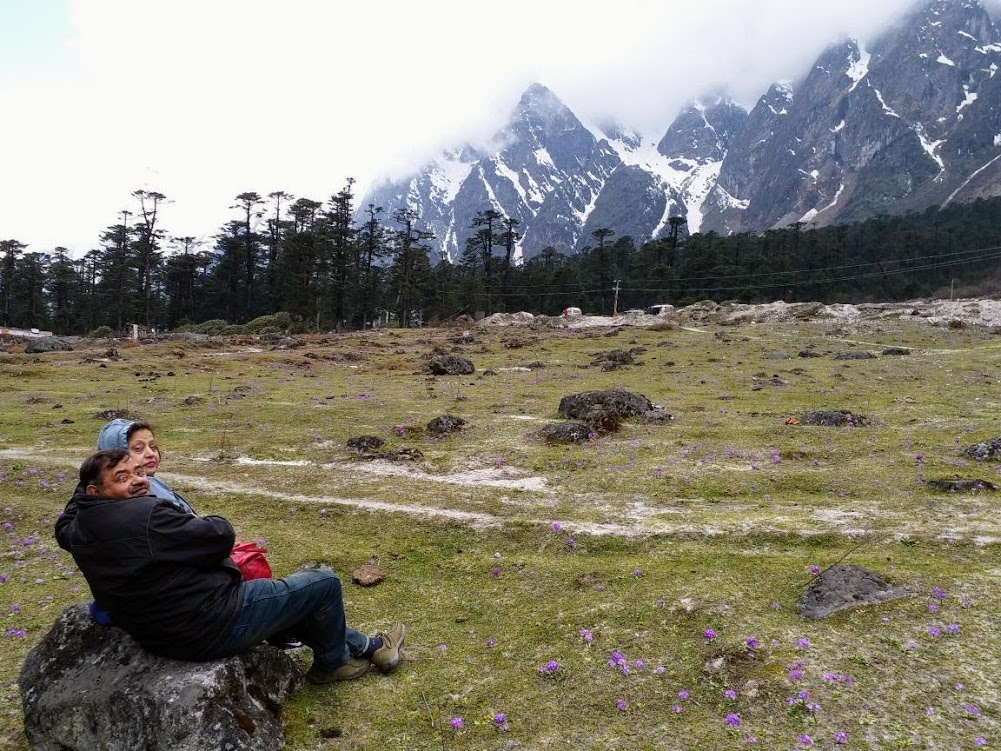
Yumthang Valley is totally covered by thick snow during the winter. It is a very peculiar feature of the valley is that during summer it’s a flower bed and during winter it’s a snow bed. The valley is closed to tourists from the month of December till March as the area experience heavy snowfall.
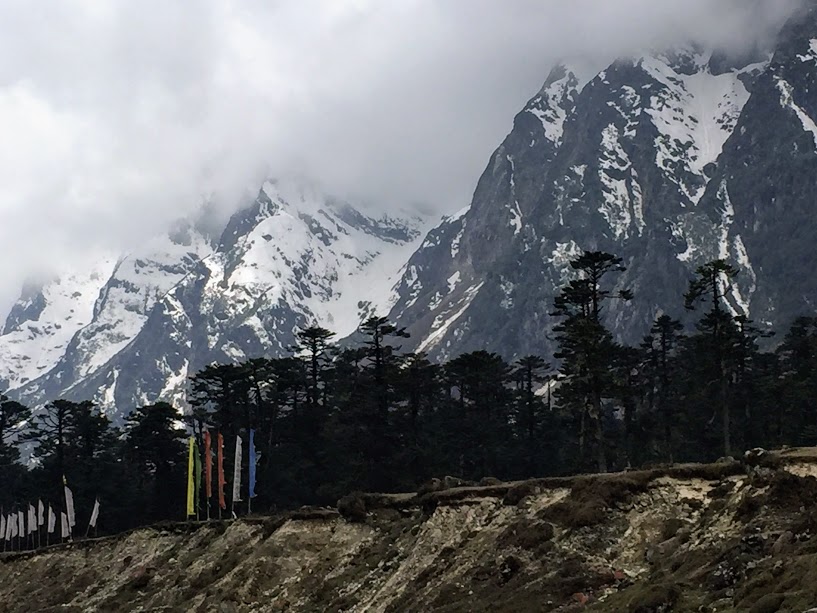
Yumthang is located on a flat valley and is the near tree line – the altitude above which there are no trees – as the surrounding hills looking like touching the sky. This makes the Yumthang Valley unique in that it has trees and rhododendrons, and yet abounds in tiny, low-growing Himalayan flowers.

We visited the small local market in Yumthang and had some noodles, eggs and tea. Jaya scanned through the small stalls selling clothes and knick-knacks and bought some souvenirs for her friends.
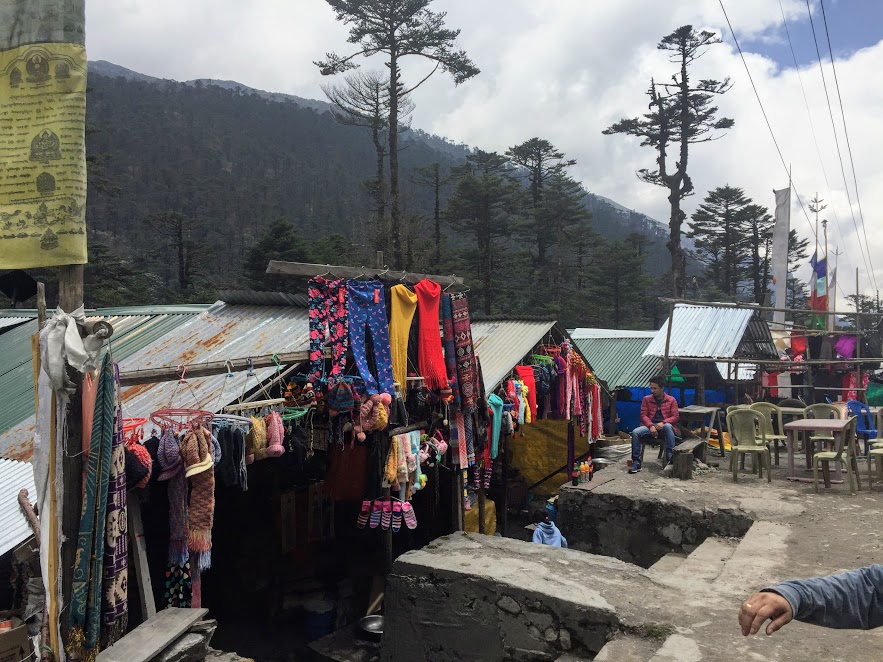
Natural Hot Spring
Another attraction of the valley is a Natural Hot Spring, which is said to have offer relief of skin ailment who takes a bath in the spring. This hot spring located a few hundred metres away from the road across a pedestrian hanging bridge on the Lachung chu. For the convenience of bathers, a hut with two pools in which the hot spring water collects has been constructed. Hot water rich in sulphur emanates from a spring behind the hut and is diverted to the pools. It is difficult to imagine that water so hot in its natural form could be found in a place so cold.
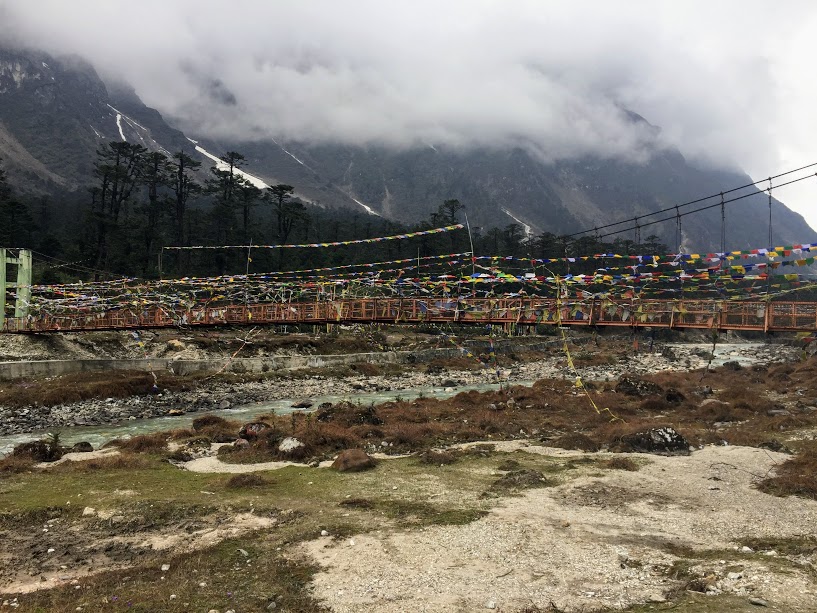
We walked for few thousand yards to reach the hot spring, crossing the hanging bridge over Lachung chu. Babai quickly jumped into the pool and had a relaxing bath there.
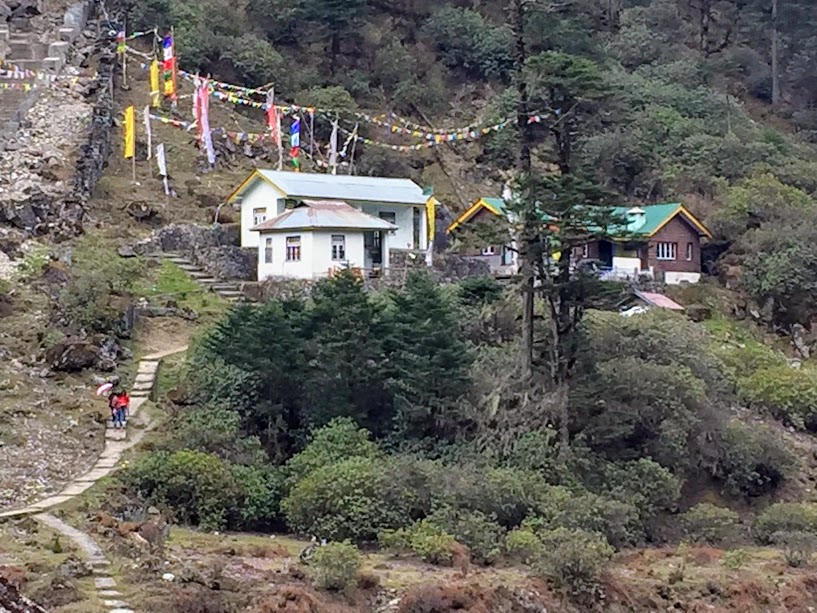
The bounty of nature, sky-kissing mountains, green meadows, flowing river, hot spring make this valley a tourist’s dream place to visit and to enjoy the beauty without any sort of infringement.
Shingba Rhododendron Sanctuary
Yumthang Valley also embraces the renowned Shingba Rhododendron Sanctuary with 24 species of Rhododendron, the state flower. The name Yumthang valley means ‘Valley of Flowers’. But the name would have been more appropriate if it said ‘Valley of Rhododendrons’. Because here as the tree line ends and the vast stretch of flowering valley exposes a dense bed of rhododendron flowers for miles and in many different colours like purple, blue, red, pink, etc. The rhododendrons bloom between March and May.
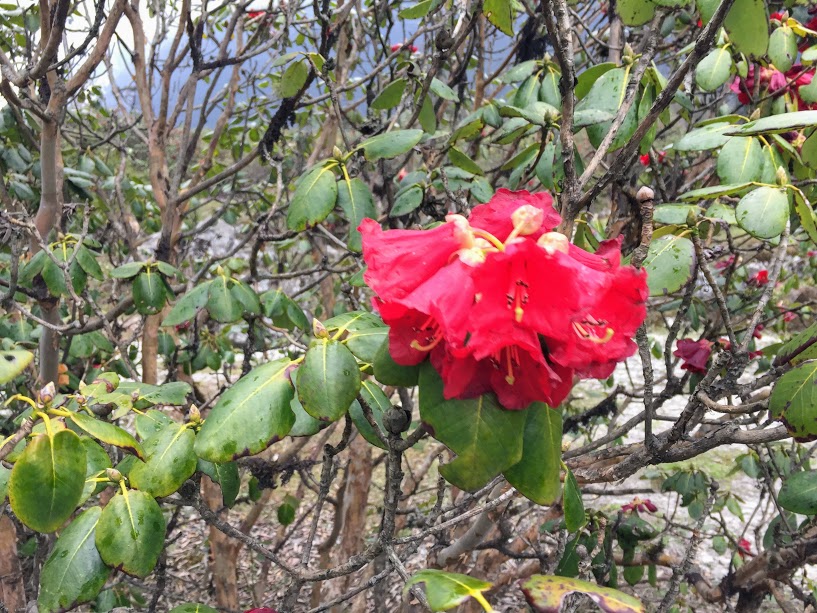

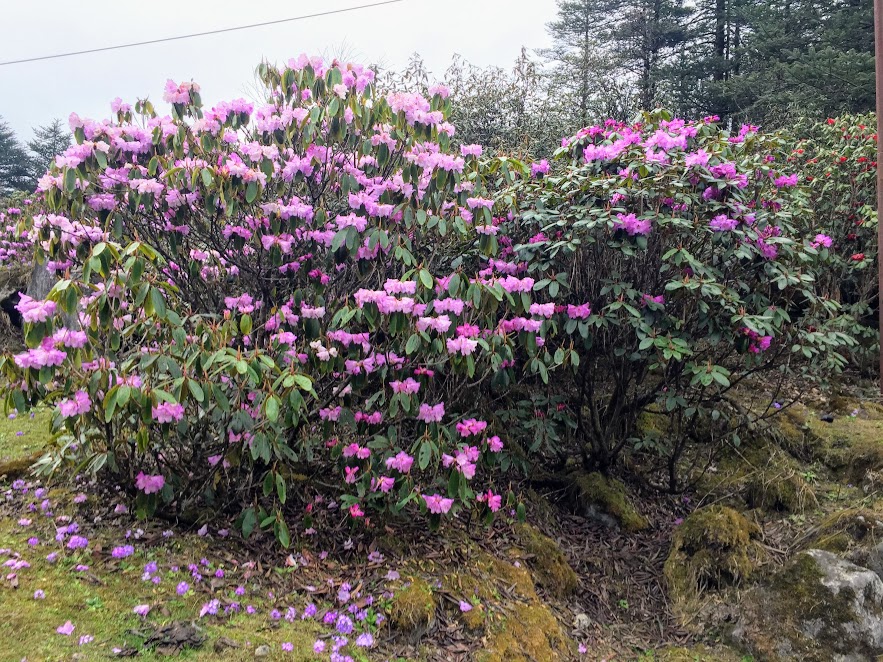
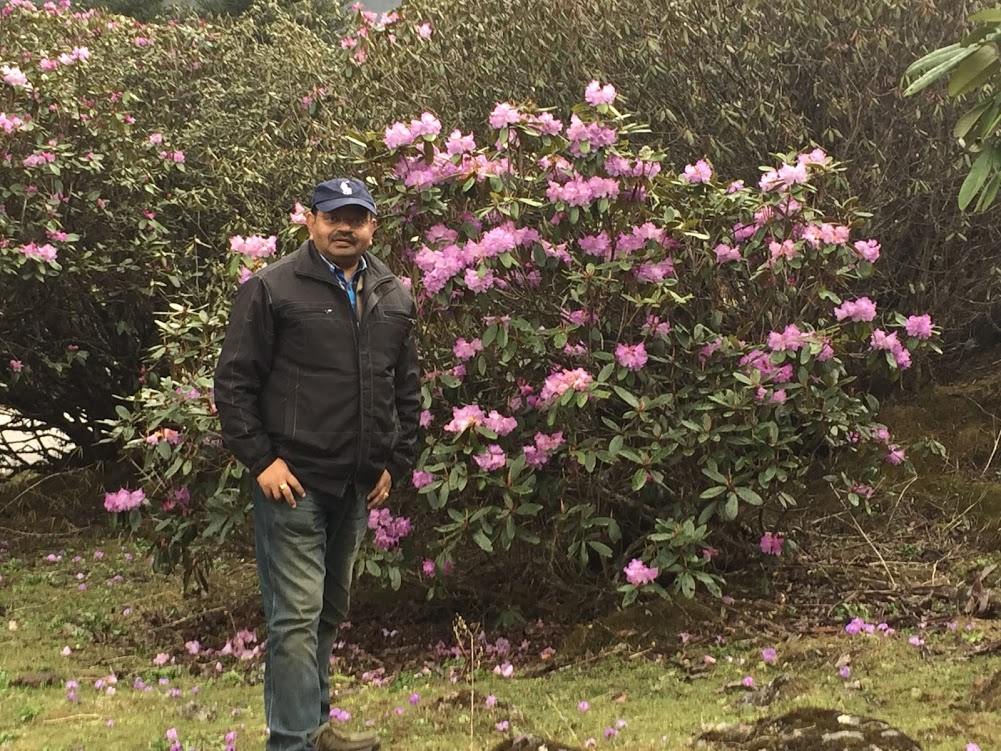

We returned to our hotel in Lachung and had our lunch. Soon after our lunch, we started our end of the journey to Gangtok.
A huge landslide
When we started from Lachung, the driver Anand said that the vehicle didn’t have enough fuel to reach Gangtok and he decided to fill it up at Mangan. But fate had a different plan for us. Just around 8 km before Mangan, we saw a huge line of vehicles lined up on one side of the road. A landslide had sent huge boulders crashing onto the highway. Several hulking chunks of rock slid onto the road blocking the highway. Sikkim roads regularly witness landslides. Landslides happen anywhere there are slopes and gravity. The residents and businesses are accustomed here to having crews remove rocks from the road every day. The drivers, therefore, line up their vehicle in tandem. On inquiry, we were told that rock sizes are so big that these cannot be pushed down the hill to clear the highway. The rocks were to be drilled and blasted so as to clear the highway. It took more than 4 hours. We had to patiently wait for the clearance. We had encountered a similar experience before. But that time rocks were smaller and a bulldozer could clear off half the road in much less time. It got dark slowly. We watched a complete Hindi movie – Kahani 2 on my laptop sitting inside the car, just to kill the time. Our main fear was that the delay might cause some bigger problem – we might not get the fuel! In Sikkim, all shops close by 8.00-8.30 p.m. We were helplessly smelling a crisis.
We heard a huge sound of blasting the rock with explosives. At last, half the road was cleared for a vehicle to pass. Luckily our side was allowed first. When we reached Mangan, it was 9.00 p.m. and the petrol pump was closed, although it’s on the highway! Like us many other taxis pulled up at the petrol pump but there was no one to sell petrol there. Anand found one of his driver friends who has some extra fuel. The drivers had their dinner there and then started from Mangan, with the other car following us. We had our dinner prepared at the home by the maid. Later, Anand took a litre of petrol from his friend and started driving at 40-45 kmph speed to optimise the consumption of fuel. Thanks to the Almighty God, we ultimately reached home in Gangtok, but it was then 2 o’clock in the morning. We were tired, hungry, fatigued and sleepy. All’s well that ends well.
Again, we had to get up early in the morning as the logistics company would come to pick up the parcels at 7.00 a.m. and we had some last moment packing left. They were coming early to avoid the “No Entry” restrictions in the city, which starts from 8.00 a.m.
It was indeed a memorable trip for us — a lifetime experience. I was awestruck by the natural beauty and diversity of Sikkim. I would highly recommend visiting Yumthang and Zero Point if you love nature and adventure. You won’t regret it!


Wonderful and lively. As I said earlier, you have a natural flow for travelogue where you take the reader on a ride along with you. Keep it up Bro. Cheers !!!
LikeLiked by 3 people
Thanks, Aro.
LikeLiked by 1 person
Breathtaking Pictures and reading through your post is like being at that place. Thank you 🙂
LikeLiked by 3 people
Thanks, Sumi. 🙂
LikeLiked by 2 people
beautiful pictures sir 🤗👏👍👌
LikeLiked by 3 people
Thanks, Badal.
LikeLiked by 1 person
Beautiful. Sikkim is high on my list of places to visit.
LikeLiked by 3 people
Thanks, Sapna. I am sure you would love every corner of Sikkim.
LikeLiked by 1 person
Vivid post… Took me on a voyage down the memory lane, when I was there few year back. Thanks for amazing clicks.
LikeLiked by 3 people
Thanks, Prakash.
LikeLiked by 1 person
Reblogged this on jayaspace.
LikeLiked by 2 people
You have a great blog and some nice posts. Can you please visit my new blog and provide me your valuable feedback about it?
LikeLiked by 1 person
You have got a nice blog and I have started following your blog.
LikeLike
The “Valley of Flowers”, sounds like a dream world with alpine pastures, rhododendron forests, and snow-clad peaks of the Himalayas. What could be a better reward after a tedious drive? Thank you or sharing the travelogue,
LikeLiked by 2 people
Thanks, Somali. Very true. Yungtham is a lovely valley.
LikeLiked by 1 person
When we visited Sikkim in early 90s and visited Changu Lake at the border of China, we did experience the same thrill as you have captured but couldn’t take any digital pictures. Thanks for sharing breathtaking pictures of the valley and mountains. We saw similar terrain at Leh too. Your post is a pictorial treat!
LikeLiked by 2 people
Thanks, Balroop for your appreciation. You can refresh your memories of Changu lake reading earlier post: https://wp.me/p10bZs-2hv 🙂
LikeLiked by 1 person
Incredible place, enjoyed the wonderful photos and the travel writing, thank you.
LikeLiked by 1 person
Thanks, Libre.
LikeLike
Hello bro..
Nicely written content and some exquisite pictures.
We are planning to visit it in the 2nd week of october. Can you please suggest how to get beyond guru dongmar lake and visit cho lamu lake..and what places we can see snow
Thank you. Keep visiting..blogging and inspiring
Us.
LikeLiked by 1 person
Thanks, Bikash.
You can see snow at Kala Patthar, Zero Point in October in North Sikkim. Our trip was arranged by Mr. Samunder Singh. You may contact him for details at +919434629950 / +919735918399 / +919434011467 or his website.
LikeLike
Breathtaking! Thankfully such places still exist. Greatly value indie travel journals like yours for an “authentic” feel.
LikeLiked by 1 person
Thanks sir. I feel honoured.
LikeLike
very nice post beautiful visiting spot……and captures very impressive photos.
LikeLiked by 1 person
Thanks, Chitra.
LikeLike
Beautiful place. In 2015 we had been in most of these nice places of Sikkim, including Yamthung and Nathula pass.
LikeLiked by 1 person
Sikkim is full of awesome sites… a wonderful state.
LikeLike
Great post! That’s a detailed travelogue with simply amazing pictures. It was such an informational blog, pleasure reading your content, Thanks.
LikeLiked by 1 person